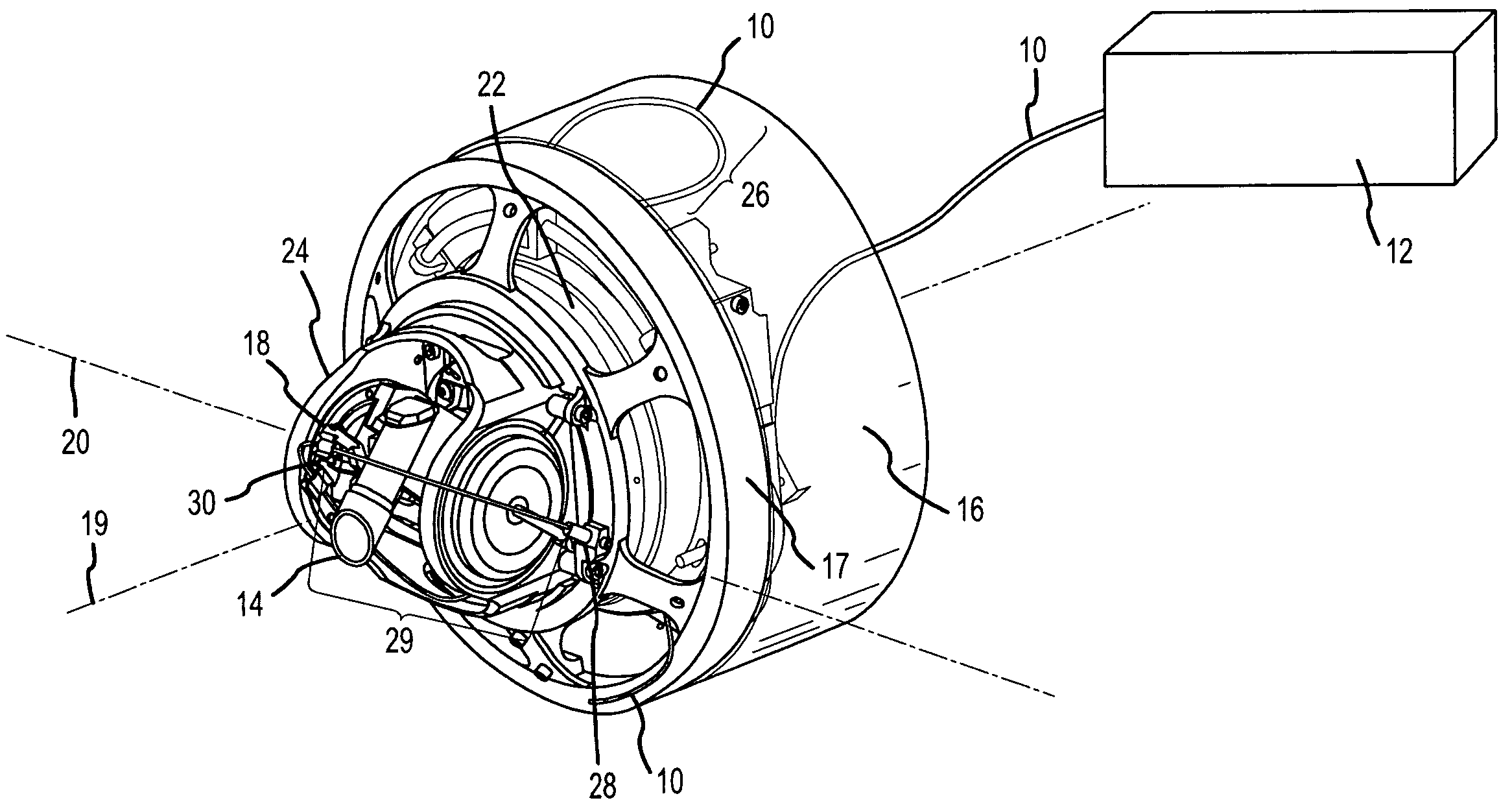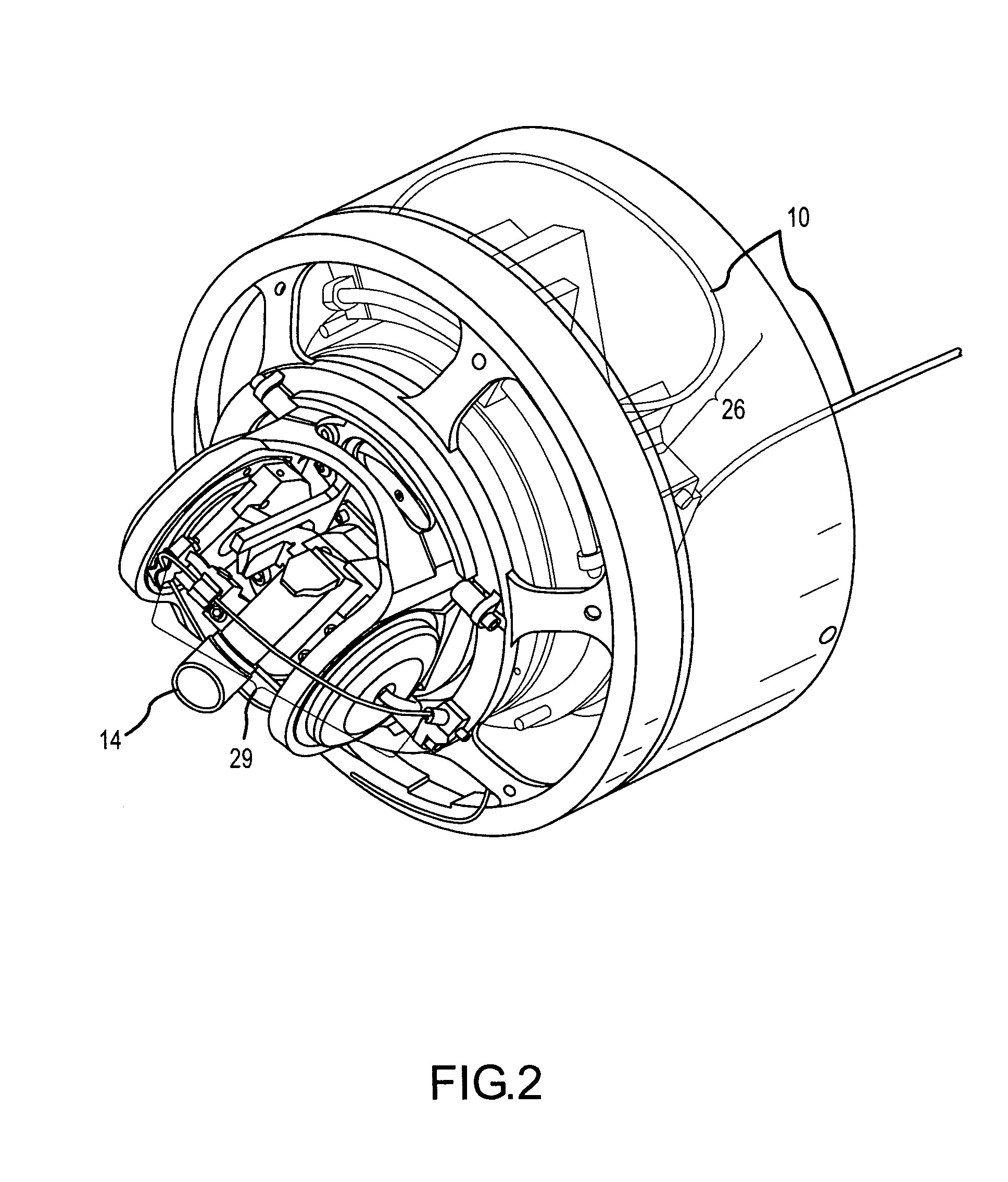Optical fiber assembly wrapped across gimbal axes
a technology of optical fiber and gimbal, which is applied in the direction of discharge tube/lamp details, direction controllers, instruments, etc., can solve the problems of unaccounted for optical paths, significant optical losses, and terrorists presenting a real threat to military aircraft and particularly commercial aircraft, etc., to achieve compact, light, and reliable
- Summary
- Abstract
- Description
- Claims
- Application Information
AI Technical Summary
Benefits of technology
Problems solved by technology
Method used
Image
Examples
Embodiment Construction
[0024]The present invention provides a power efficient, reliable, compact, lightweight and inexpensive solution for optically coupling an off-gimbal optical source such as a laser beam to an on-gimbal optical element such as a telescope. The on-gimbal optical element can be mounted off-axis thereby preserving the central region of the gimbal for another optical path such as that used by a receiver. The technique can be adapted for gimbal motion in any one of the three axis of rotation, (e.g. roll, nod, and elevation) or any combination thereof. In the case of multi-axis rotation, the optical element is mounted on the innermost gimbal. For clarity we will use a roll-nod gimbal throughout to illustrate the invention. Throughout the description we refer to pinning an “end” of the fiber assembly on or off gimbal. The “end” is actually a point along the continuous fiber, and is only an “end” with respect to the particular gimbal that is being described. The true ends of the fiber are cou...
PUM
 Login to View More
Login to View More Abstract
Description
Claims
Application Information
 Login to View More
Login to View More - R&D
- Intellectual Property
- Life Sciences
- Materials
- Tech Scout
- Unparalleled Data Quality
- Higher Quality Content
- 60% Fewer Hallucinations
Browse by: Latest US Patents, China's latest patents, Technical Efficacy Thesaurus, Application Domain, Technology Topic, Popular Technical Reports.
© 2025 PatSnap. All rights reserved.Legal|Privacy policy|Modern Slavery Act Transparency Statement|Sitemap|About US| Contact US: help@patsnap.com



